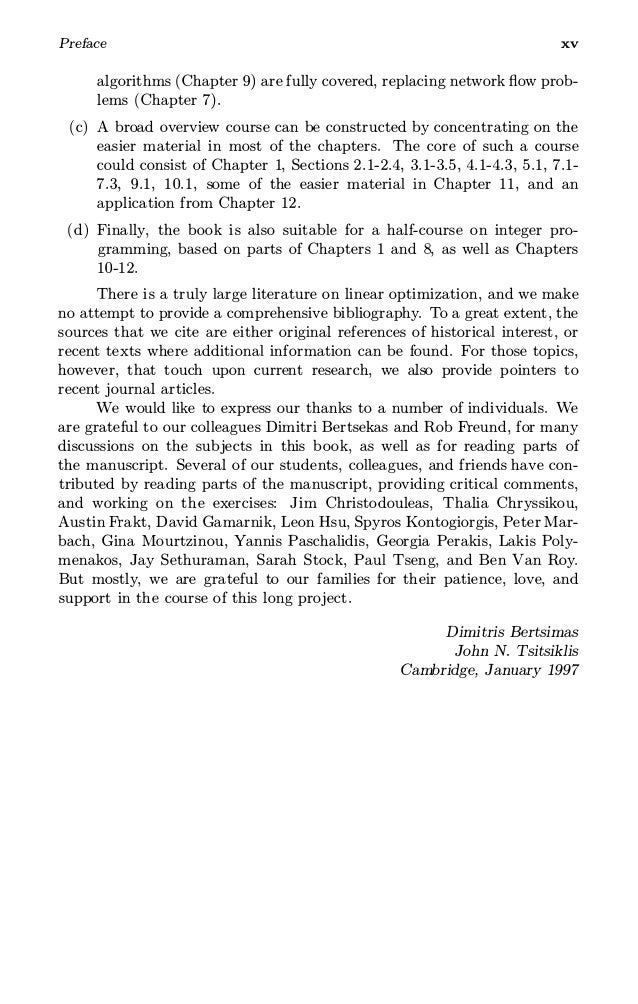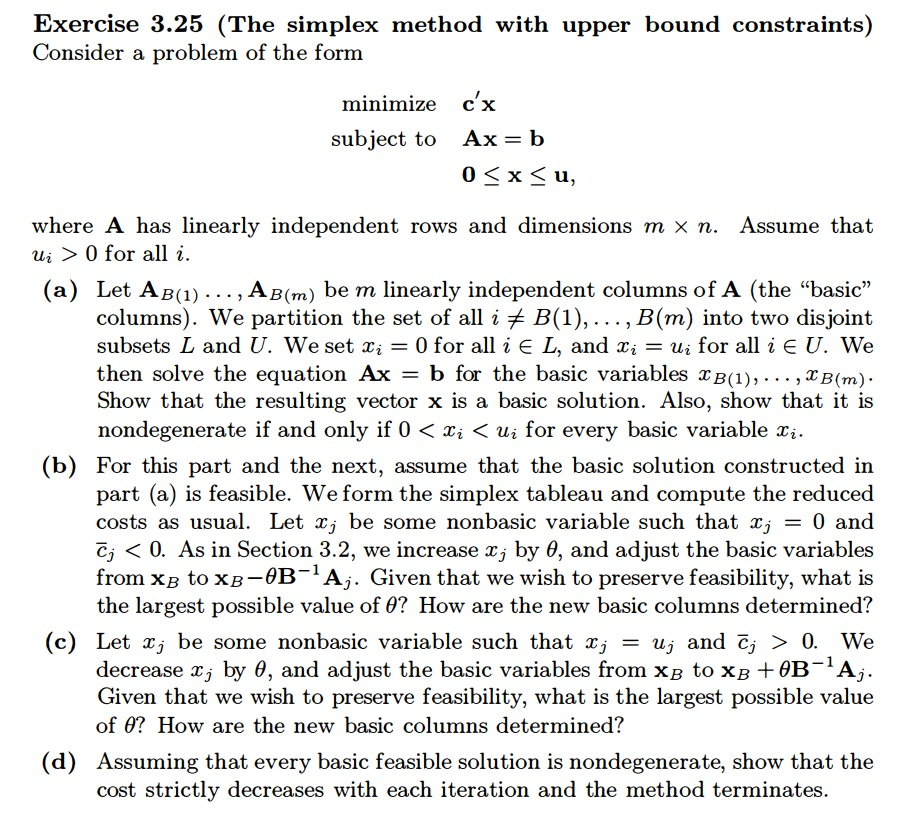
Solution manual of u003Cintroduction to linear optimizationu003E news: weu0027re looking for new moderators for all the sections of the website. 134, exercise 3.20(b): replace by\the rstrowinthe present tableau (below the row with the reduced costs) indicates that the. Solution Manual For: Introduction to Linear Optimization by Dimitris Bertsimas & John N. The old Google Groups will be going away soon, but your browser is incompatible with the new version. Search: Fatal error: Call to undefined function sttm_recent_terms_list() in /home/pdfbeast/public_html/wp-content/themes/pdf-search/footer.php on line 3 This shows that f () can be c written as a piecewise linear convex function.Įxercise 1.3 (minimizing a linear plus linear convex constraint)We desire to convert the problem min(c x + f (x)) subject to the linear constraint Ax b, with f (x) given as in the picture to the standard form for linear programming.Filename: instructor manual linear optimization bertsimas Since one of the (j, dj ) will produce the global maximum. Thus we can see that f () can be written as c f (x) = Maxj=1,2,3.,Qn ml cj x + dj, l=1 (11) We have m1 choices to make when selecting (cj, dj ) from the rst piecewise linear convex function, m2 choices for the second piecewise linear convex function, and so on giving a total of m1 m2 m3 mn total possible sums each producing a single pair (j, dj ). The number of such coecients can be determined as follows.

Each pair of (j, dj ) c is obtained by summing one of the (cj, dj ) pairs from each of the n sets. , n sets of coecients from the individual fi.

Now select a new set of ane values (j, dj ) formed by summing elements c from each of the 1, 2, 3. , n we are adding up in the denition of f () we will assume that function fi (x) has mi ane/linear functions to maximize over. Now for each of the fi (x) piecewise linear convex functions i 1, 2, 3. Part (b): The denition of a piecewise linear convex function fi is that is has a representation given by fi (x) = Maxj=1,2.,m (cj x + dj ). = f (x) + (1 )f (y) and thus f () is convex. For our function f () we have thatmįi (x + (1 )y) fi (x) + (1 )fi (y)i=1 m m This implies that f must be linear and the expression given in the book 1.2Part (a): We are told that fi is convex so we have that fi (x + (1 )y) fi (x) + (1 )fi (y), for every i. Combining these two expressions we have that f must satisfy each with equality or f (x + (1 )y) = f (x) + (1 )f (y).

Since f () is concave we also have that f (x + (1 )y) f (x) + (1 )f (y). IntroductionAcknowledgementsSpecial thanks to Dave Monet for helping nd and correct various typos in these solutions.Ĭhapter 1 (Introduction)Exercise 1.1Since f () is convex we have that f (x + (1 )y) f (x) + (1 )f (y).


 0 kommentar(er)
0 kommentar(er)
